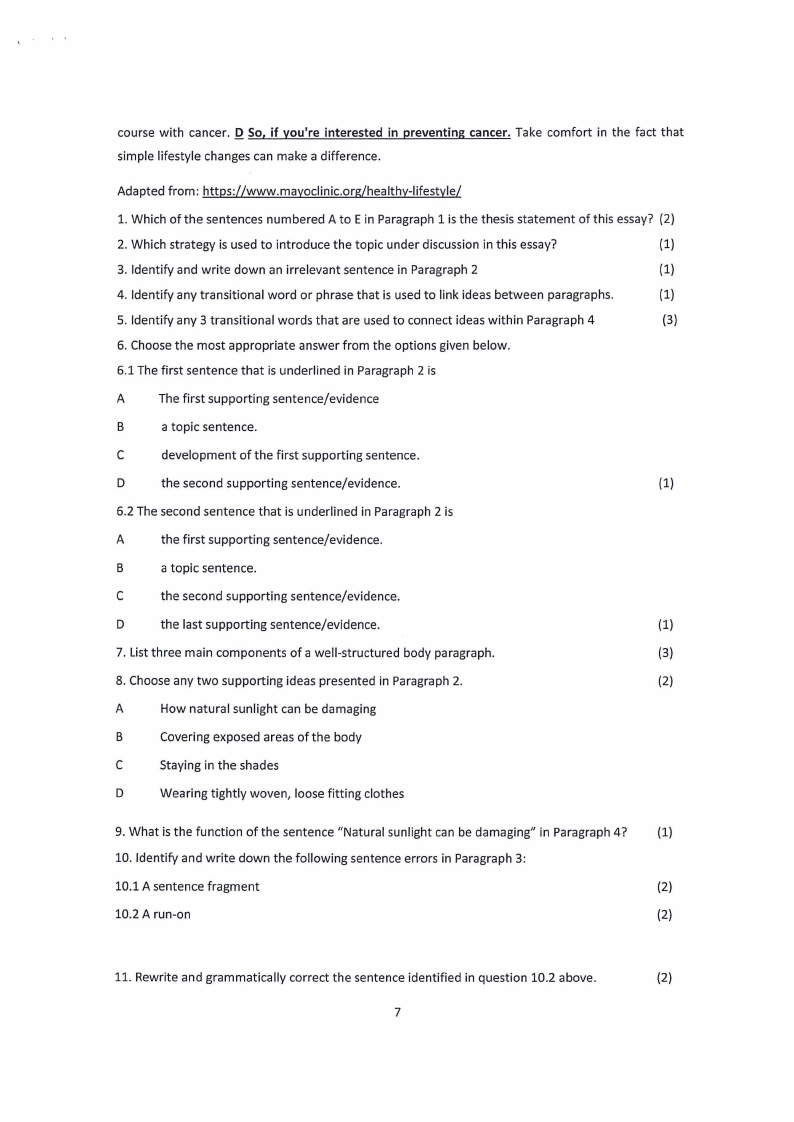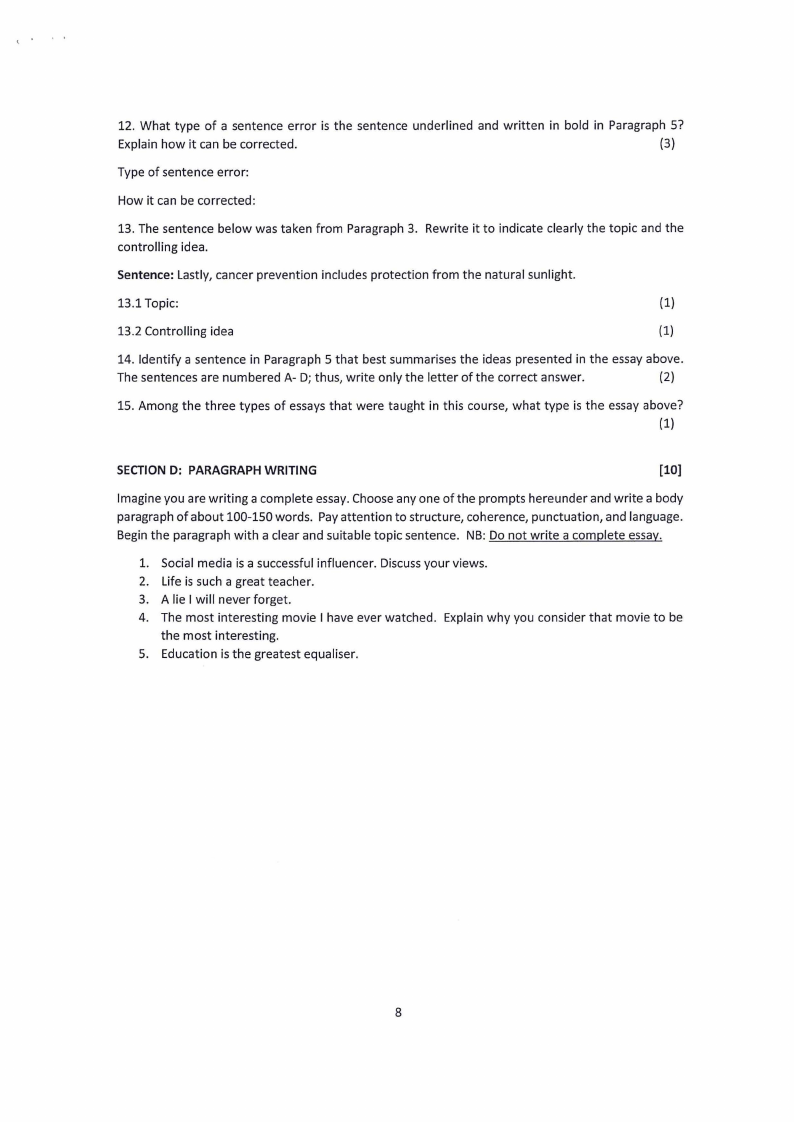
Section A: Reading Comprehension
[25 marks]
Read the passage below and then answer the questions that follow.
Human beings are in the process of dramatically reshaping the Earth's ecosystems. As far
back as the 19th century, some scientists have noted that the current era is defined mainly by
the impact of human activity. Now, there is an emerging consensus among Earth scientists
that we have indeed entered a new period of geological time, the Anthropocene epoch.
Scientists who study the history of the Earth usually divide geological time according to major
changes to the ecology and climate of the Earth. For instance, the Cambrian period, some
five hundred million years ago, is distinguished by a sudden explosion in the diversity of life,
including the emergence of the ancestors of many modern species. More recently, the
Pleistocene epoch, which ended about ten thousand years ago, is notable for its glaciers that
swept over much of the Earth. The new Anthropocene epoch would be distinguished from
all earlier times in Earth's history by the dramatic impact of human activity on the Earth.
Though Earth scientists debate exactly when the Anthropocene began, there is a clear
consensus that human changes to the environment are real and extreme. For example, many
life forms have become, and are becoming extinct as a direct result of human activity. Some
palaeontologists thus argue that the human impact of the Anthropocene began at the end of
the last Ice Age, around ten thousand years ago. The fossil record indicates that around that
time, many large animals, like woolly mammoths and giant sloths, went extinct shortly after
humans arrived in their ranges. Their sudden disappearance suggests that habitat
destruction and overhunting by humans may have contributed to their demise. Indeed, many
large animals, like elephants and gorillas, are endangered for those same reasons today.
The pace of human-caused extinctions has only increased in the past several hundred years.
The growth and spread of human populations, caused by advances in seafaring technology
and agriculture, has led to overexploitation of fragile ecosystems, introduction of invasive
species, and pollution, causing many extinctions. Scientists have estimated the rate of
extinction by studying the fossil record, monitoring existing species, and using statistical
models to estimate the number of undiscovered species that have been lost. Estimates vary,
but most scientists believe that diverse species are going extinct at hundreds or thousands of
times the natural rate. Indeed, the International Union for the Conservation of Nature has
found that, of species surveyed on its Red List of Threatened Species, about a fifth of all
mammals and reptiles and nearly a third of amphibians are in danger of extinction. This
ongoing, rapid loss of species has been described as a mass extinction, as severe as the vent
that wiped out the dinosaurs sixty-five million years ago. To some ecologists, this steep
decline in biodiversity suggests that the Anthropocene epoch began in the 17th and 18th
centuries, when the rate of extinction shot up dramatically.
Human activity is also altering the climate as a whole. Since the Industrial Revolution in the
18th and 19th centuries, humans have significantly altered the atmosphere by mining and
burning fossil fuels such as coal, oil, and natural gas. Some by-products of the use of these
fuels, such as carbon dioxide, are greenhouse gases that trap solar energy in the Earth's
atmosphere. To assess the impact of these greenhouse gases on the Earth, scientists have
2
























